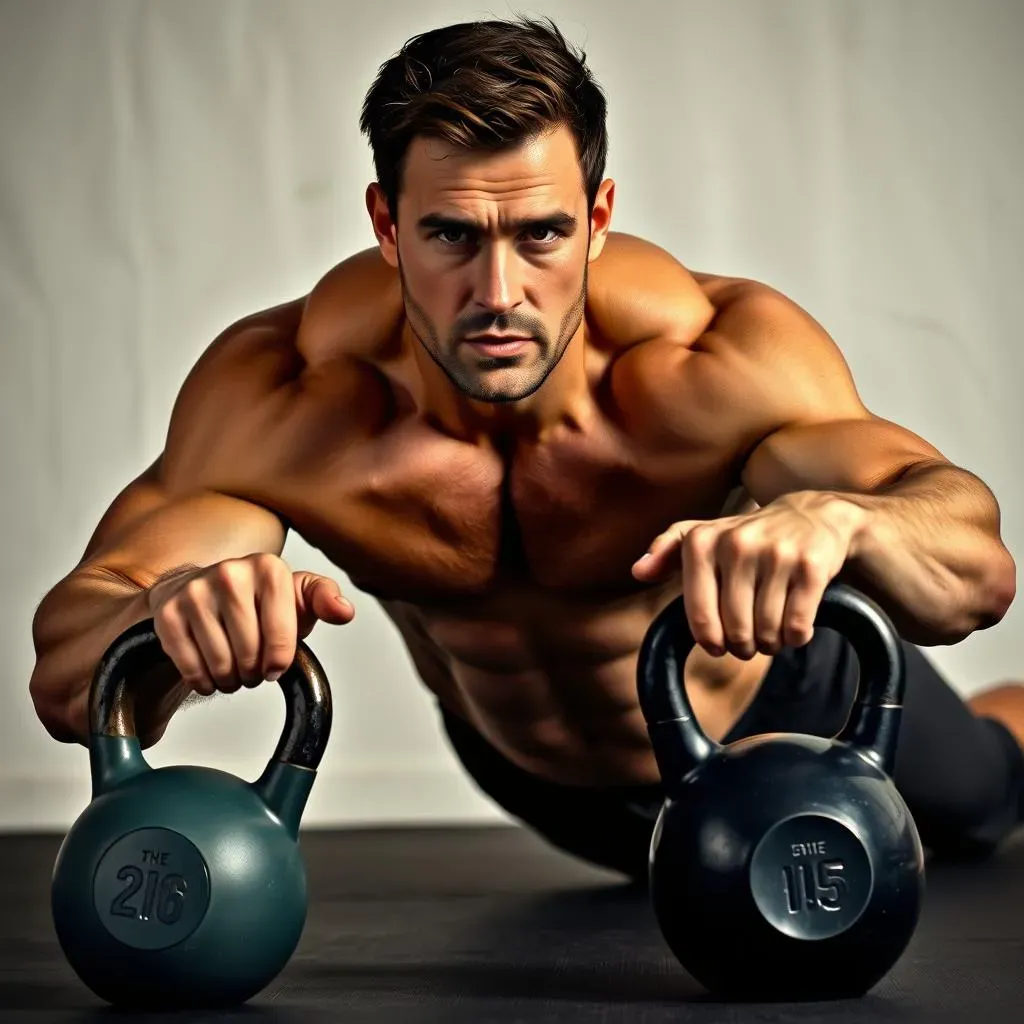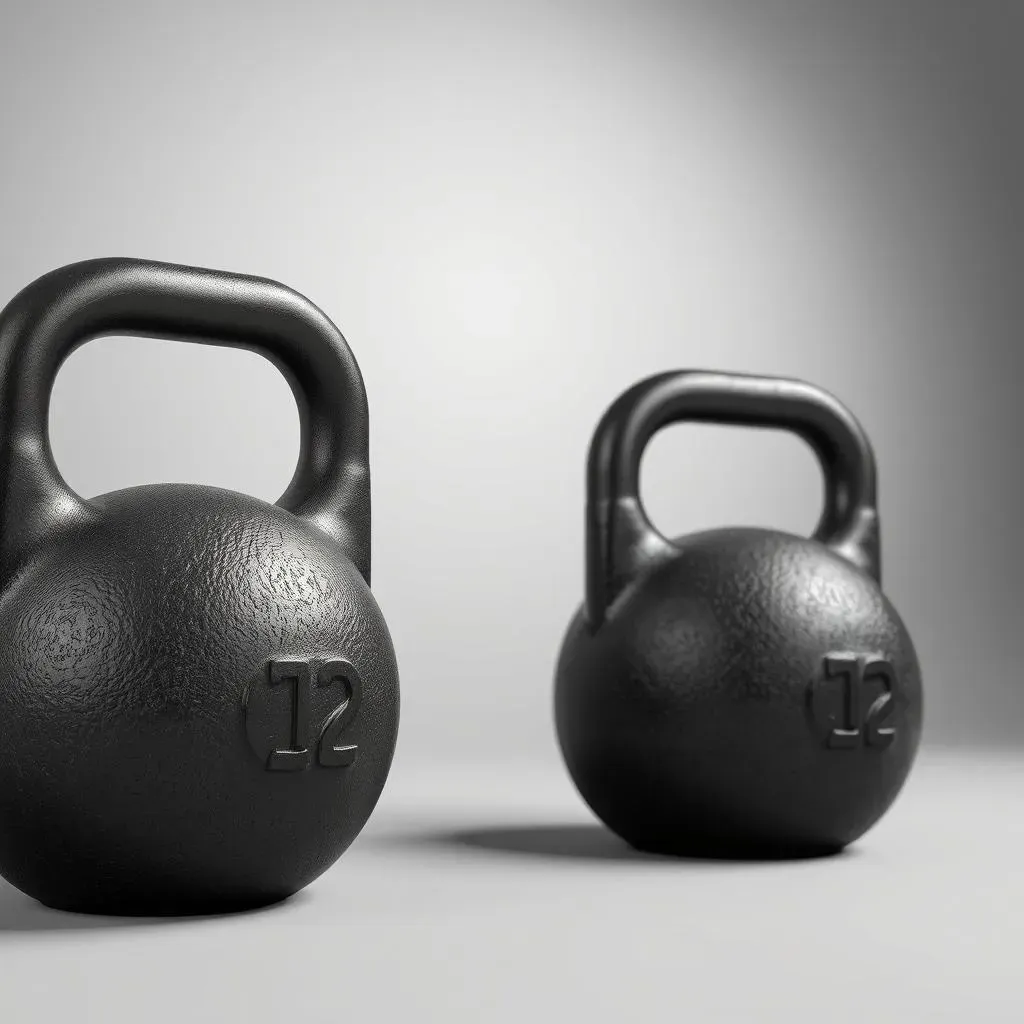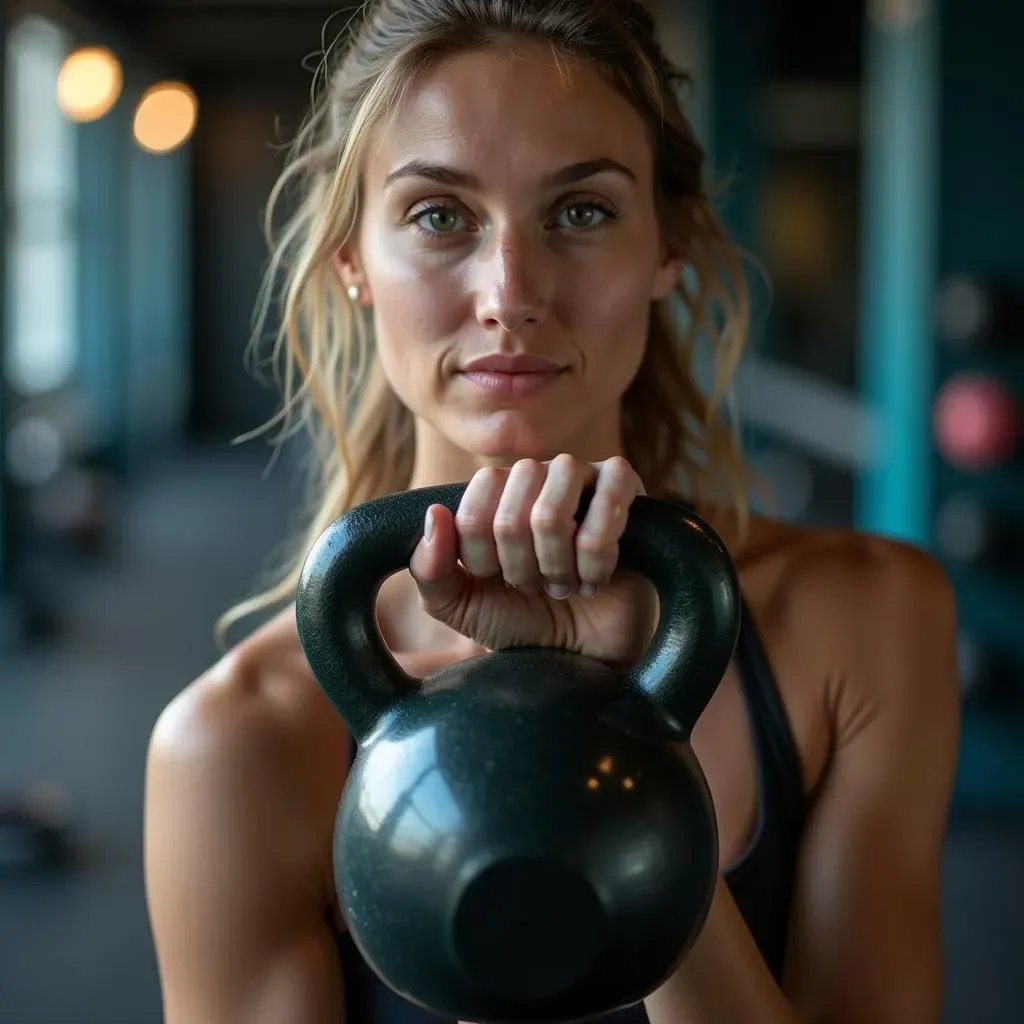Table of Contents
Are you tired of the same old chest workouts? Do you want to build a powerful chest without being stuck to a bench? Then you're in the right place! We're going to explore the world of the kettlebell chest exercise. Forget those heavy barbells for a minute, kettlebells offer a unique and effective way to sculpt your chest muscles. This article is your guide to mastering kettlebell chest training. We'll start by uncovering the five best kettlebell exercises that will target your chest from all angles. Then we will look into why kettlebells are a great choice for chest workouts. After that, we'll discuss some important tips to make sure you're getting the most out of every rep. Finally, we'll dive into how you can progress your kettlebell training over time to keep making gains. Get ready to discover a new way to build a stronger, more defined chest with kettlebells.
Best Kettlebell Chest Exercises for a Stronger You

Best Kettlebell Chest Exercises for a Stronger You
let's talk about the good stuff - the exercises that’ll actually make a difference. When it comes to building a strong chest with kettlebells, you've got to go beyond the standard push-ups. We're talking about moves that challenge your muscles in new ways. First up, the kettlebell floor press. It's like a bench press, but you're on the floor, which changes the stability and works your core a little more. Then there’s the bench press with kettlebells, which can be done on a regular bench or even a stability ball for extra core work. Don't forget the incline press, which helps hit the upper chest. We're also going to include flyes, which are awesome for stretching and building the chest. Finally, we'll add deficit push-ups with kettlebells to really challenge your strength.
Why Choose Kettlebell Chest Workouts?

Why Choose Kettlebell Chest Workouts?
More Than Just a Weight
so you might be thinking, "Why kettlebells? Why not just stick to dumbbells or barbells?" Well, here's the deal. Kettlebells aren't just another weight. They're designed in a way that shifts the center of gravity, making your muscles work a bit harder to keep things stable. This means you're not just lifting; you're also engaging your core and stabilizer muscles more intensely. It's like getting a two-for-one deal every time you move. Plus, the shape of a kettlebell allows for a longer range of motion in some exercises, which can lead to better muscle growth and strength gains.
Benefits Beyond the Bench
Using kettlebells for chest workouts has some pretty cool advantages. First off, they boost your endurance like crazy. Because you're using more muscles to control the kettlebell, you'll find you can push yourself harder for longer periods. They also help improve your stability. When you're pressing or flying with a kettlebell, your body has to work to keep the weight steady, which in turn improves your balance and makes you stronger in everyday life. And let's not forget about grip strength – kettlebells are a fantastic way to develop a killer grip, which has benefits far beyond the gym.
Benefit | Description |
|---|---|
Enhanced Endurance | Work more muscles, can push harder for longer. |
Improved Stability | Body works harder to control the weight, enhancing balance. |
Grip Strength | Unique shape helps develop killer grip strength. |
Real-World Strength
Think about it: when do you ever lift a perfectly balanced weight in real life? Probably never. Kettlebells mimic the way we move and lift in real life. They are not perfectly balanced so it forces your muscles to adapt and become stronger in a functional way. For example, carrying a heavy bag of groceries is similar to what you would do with a kettlebell. By training with kettlebells, you build strength that is useful in the real world, not just in the gym. It’s about getting stronger in a way that makes your body more capable and resilient. This functional strength is what makes kettlebells a really smart choice for chest workouts.
Tips for Effective Kettlebell Chest Exercises

Tips for Effective Kettlebell Chest Exercises
Grip It Right
let’s get down to the nitty-gritty. How you hold the kettlebell can make or break your workout. It’s not just about grabbing it and going. Think of your hand as a hook, not a fist. You want the handle to sit diagonally across your palm, closer to your fingers than your wrist. This way, the weight is supported by your hand, and you're not putting unnecessary stress on your wrist. A good grip allows you to control the kettlebell better and engage your chest muscles more effectively. If you're not sure, start with lighter weight and really focus on getting your grip right before increasing the weight.
Also, think about where you're inserting your hand into the handle. You don't want your hand sliding all over the place. Find that sweet spot where you feel stable and can generate power. It's like finding the perfect spot on a baseball bat – it just feels right. Trust me, once you get this down, your chest exercises are going to feel way better, and you’ll see better results.
Master the Movement
Now, let’s talk about the actual movements. It's not about how much weight you can throw around; it's about the quality of each rep. Slow and controlled movements are key here. When you’re doing a kettlebell floor press, for example, lower the weight slowly, feeling the stretch in your chest, and then push back up with a controlled motion. No jerky movements, no letting the weight drop like a rock. Think of it like you're painting a masterpiece – every stroke counts. The same thing goes for any chest exercise you do with a kettlebell.
Also, focus on squeezing your chest muscles at the top of each movement. This will help maximize the engagement of your chest and make your workout way more effective. It's like flexing, but you're doing it while lifting. You're not just moving the weight; you're actively engaging the muscles you want to work. It's a small change that makes a big difference. Remember, it’s not about how fast you can go through your reps, but about how well you can perform them.
Tip | Description |
|---|---|
Hand Insertion | Handle sits diagonally, closer to fingers. |
Control | Slow, controlled movements, no jerking. |
Squeeze | Engage chest muscles at the top of each rep. |
Listen to Your Body
Finally, let’s talk about the most important thing: listening to your body. If something doesn’t feel right, stop. There’s no point in pushing through pain and risking injury. It’s always better to take a step back, adjust your form, or lower the weight. Your body is your best guide, and it's important to respect its signals. Don't let your ego get in the way of your progress. It’s not a race; it’s a journey. There will be days when you’re feeling strong and days when you’re not, and that’s okay.
Also, make sure you’re warming up properly before jumping into your kettlebell chest exercises. A few minutes of light cardio and some dynamic stretching can work wonders in preventing injuries and getting your body ready for the workout. And don’t forget to cool down and stretch after your workout. It’s a vital part of the process that helps your muscles recover and makes you feel better. Just like you wouldn't start a car without warming it up, don't start your workout without warming your body up.
Progressing Your Kettlebell Chest Training

Progressing Your Kettlebell Chest Training
The Challenge of Kettlebell Progression
so you've got the hang of the exercises, your grip is solid, and you're feeling the burn. Now what? Here's the tricky part with kettlebells: they don't increase in weight as easily as dumbbells. You can't just grab a 2.5-pound plate and add it on. You're often stuck with jumps of 4, 8, or even 10 pounds, and that can feel like a huge leap. But don't sweat it, there are ways around this. The key is to use a method called progressive loading, which means gradually increasing the stress on your muscles over time. It's not just about lifting heavier, it's about making your muscles work harder in different ways.
One way to do this is to start with the heaviest weight you can handle for the given reps, and then focus on increasing the number of reps you can do. For example, if you can do 8 reps of a floor press with a 20-pound kettlebell, you can aim for 9, 10, or even 12 reps before going up in weight. This helps you build endurance and strength at the same time. Also, don’t forget about double progression, where you increase reps and then the weight. It’s like climbing stairs one step at a time, it’s much easier to go up one stair instead of two at once.
Fine-Tuning Your Training
Another way to progress is to play around with the different exercises we talked about. You can switch from a regular floor press to a decline floor press, which will hit your chest a bit differently. Or you can try a fly variation. There are also single-arm chest exercises. These are great for working on any imbalances in your chest and make your core work extra hard to keep you stable. It’s like throwing your body a curveball, you are making your muscles adapt to new challenges. Remember, you don’t need to keep doing the same thing over and over again, you can make small adjustments to keep your body guessing and keep making progress.
You can also try slowing down your movements. Instead of rushing through your reps, try lowering the kettlebell slowly and pausing at the bottom before pushing back up. This increases the time your muscles are under tension, which is great for building strength and muscle. Also, try adding a pause at the top of the movement, squeezing your chest muscles before going into the next rep. These small details can make a big difference in how your muscles respond. It’s like adding extra seasoning to your food – it just makes it better.
Progression Method | Description |
|---|---|
Progressive Loading | Gradually increase stress over time. |
Double Progression | Increase reps then the weight. |
Vary Exercises | Change the angles, try single arm, add pauses. |
Seeking Guidance
If you're feeling stuck or unsure about how to progress, there's no shame in seeking help. Consider reaching out to a qualified fitness professional who understands kettlebell training. They can help you create a personalized training plan that suits your goals and fitness level. They can also give you feedback on your form and make sure you're doing the exercises safely and effectively. It's like having a tour guide for your fitness journey, someone who can help you make the most out of it. There are also great resources online, like Barbell Medicine, where you can find lots of good information about training and programming.
Remember, training is a marathon, not a sprint. It’s important to be patient and consistent. There will be times when you feel like you're not making progress, and that's completely normal. The important thing is to keep showing up and keep pushing yourself. Don't compare yourself to others, focus on your journey and your progress. And most importantly, have fun with it. Training should be something you enjoy, not something you dread. So, grab your kettlebells and get to work!
Wrapping Up Your Kettlebell Chest Journey
So, there you have it, a comprehensive guide to building a powerful chest with kettlebells. From the floor press to the fly, we've explored a variety of exercises that can challenge your muscles and boost your strength. Remember, consistency and proper form are key. Don't be afraid to start with lighter weights and gradually increase the intensity as you progress. Kettlebells offer a versatile and effective way to work out, and they are a valuable addition to any fitness routine. Whether you're a seasoned lifter or just starting out, incorporating these kettlebell chest exercises into your routine can help you achieve a strong, defined chest. Now, go grab that kettlebell and get to work!